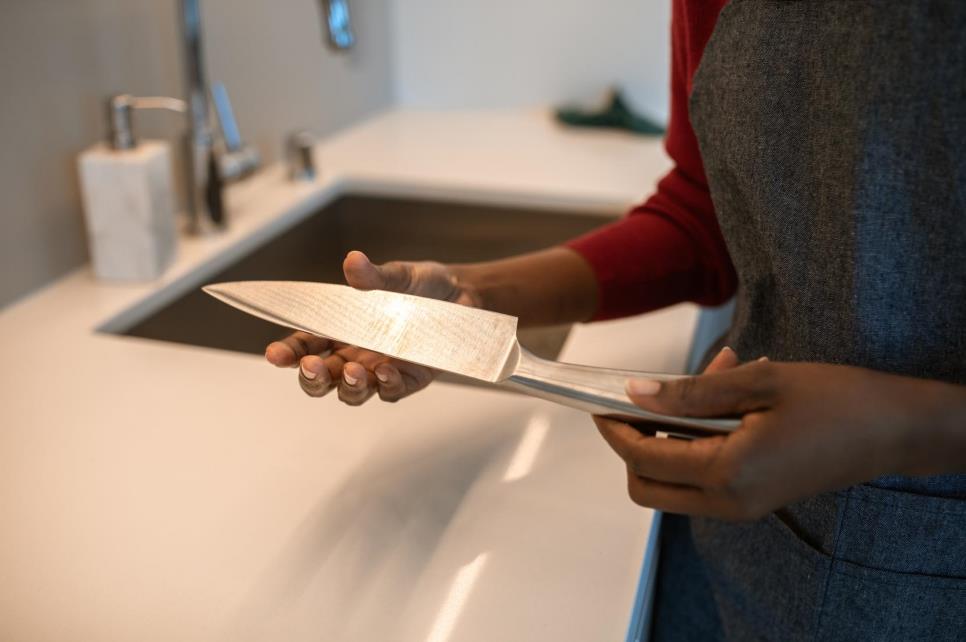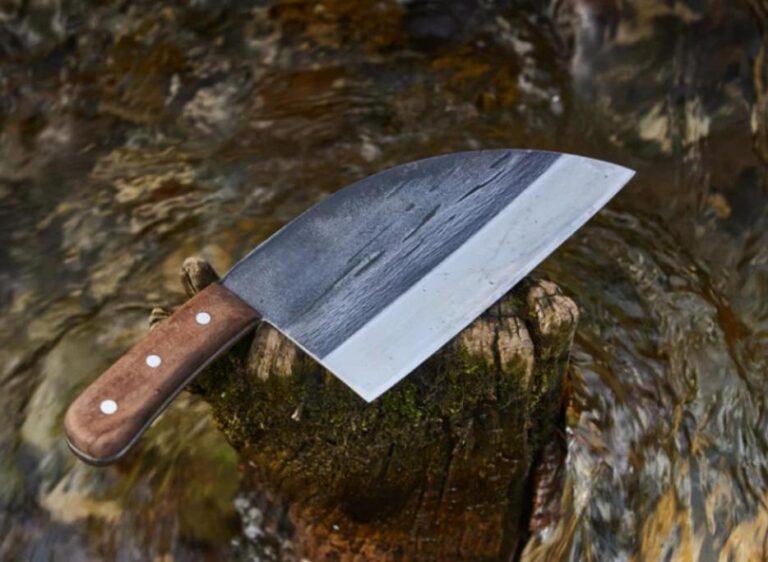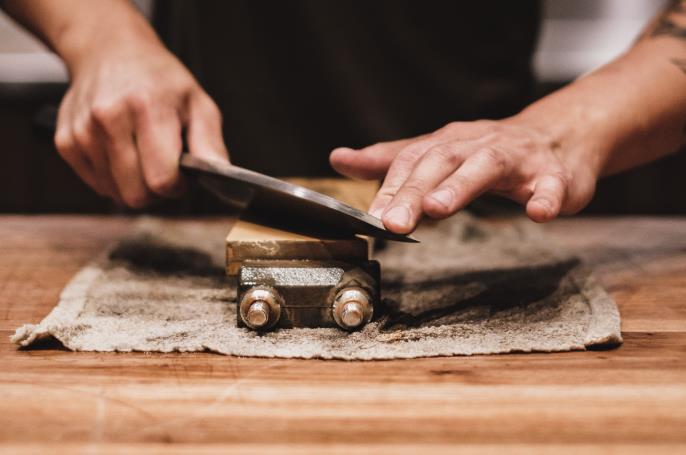In this article, LeeKnives is going to give you practical tests and assessment methods for determining whether or not the knives that you’re selling are, indeed, sharp.
We’ll also be giving you stellar advice on blade sharpness and knife care that’ll keep your knife stock up to scratch and ready to please the most demanding customer!
It may be that you’ve accepted the sharpness of the knives from your supplier as a given, you don’t understand how to evaluate the sharpness of a blade edge, or perhaps your customers are unaware of how to test their knives at home for best performance.
This article aims to educate you and thus your buyers on knife sharpness so that the best knife performance can be achieved consistently. A knife that’s consistently sharp enough and a pleasure to use is good for the purchaser and therefore good for you as their chosen knife retailer, as it fosters repeat business.
Why do you need to understand knife sharpness
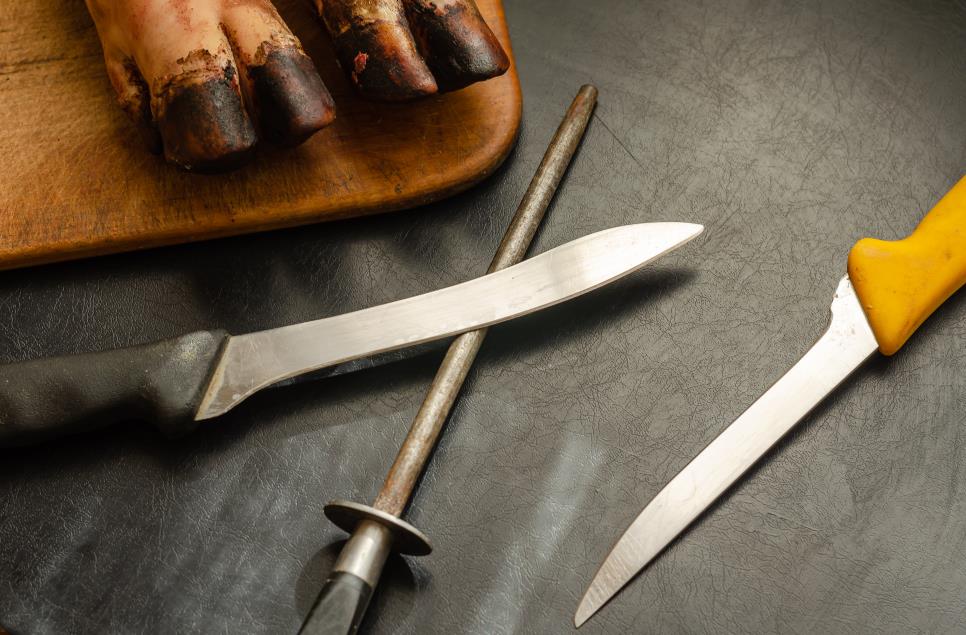
- You can inspect bulk orders of knives to ensure quality
- You can educate customers on effective knife sharpness tests and practices
- Sharp knives are safer to use than dull ones
- A sharp knife makes tasks quicker and less labor intensive
- A reputation for selling sharp knives and after sales support to keep those knives sharp is desirable and good business
- A knife that’s cared for and sharpened regularly will give longevity and customer satisfaction
- Sharpness as the standard for your product inspires consumer confidence in the quality of your goods
- Understanding knife sharpness tests gives your buyer confidence that you understand knives and their maintenance fully in a practical sense
Let’s look now at some accepted tests for knife sharpness.
Note: For safety’s sake, whilst conducting any type of sharpness test the tester’s hands should be dry and oil free and the area cleared of children and pets to avoid accidents.
Buy Wholesale Knives and Start Scaling up with Us Today
Contact us and connect with a sales rep to get a free quote.
The visual inspection
AKA ‘the eyeball test’, this test uses your own sight and the refractive quality of light to spot deficiencies on a knife blade. For most people good eyesight is sufficient but for more accuracy a jeweler’s loupe, digital microscope or magnifying apps can be used.
How it’s done
- Stand under a bright light and place the knife on its side in front of you on a flat surface.
- The knife will be lying positioned across the width of your body, so running lengthwise from one hip to the other.
- Holding the handle of the knife, start tilting the blade incrementally to various angles, slowly angling the whole side of the blade so that the light plays across it from different angles.
- A good tip is to also use a flashlight positioned at the spine of the blade and shining down along the blade’s side.
- As you move the blade under your light source the light will reflect off any burr or imperfection on the blade edge, highlighting it.
- Some imperfections will be easily visible to the naked eye, others will need a magnifying method.
- If you spot a thin blue, silver or dark line in the reflection of the blade edge, the blade is sharp enough to use.
- As you play the light source along the whole of the blade’s length on either side, rough areas will reflect back and betray themselves and obvious damage like blade chips will become very apparent and you can note these for smoothing and repair.
The paper test
For this test we recommend a fibrous paper like paper towel, toilet paper or newspaper. As the knife blade moves through a fibrous paper it will catch and snag where the blade is dull, making dull areas of the edge easy to spot. A variation on this is the standing paper test.
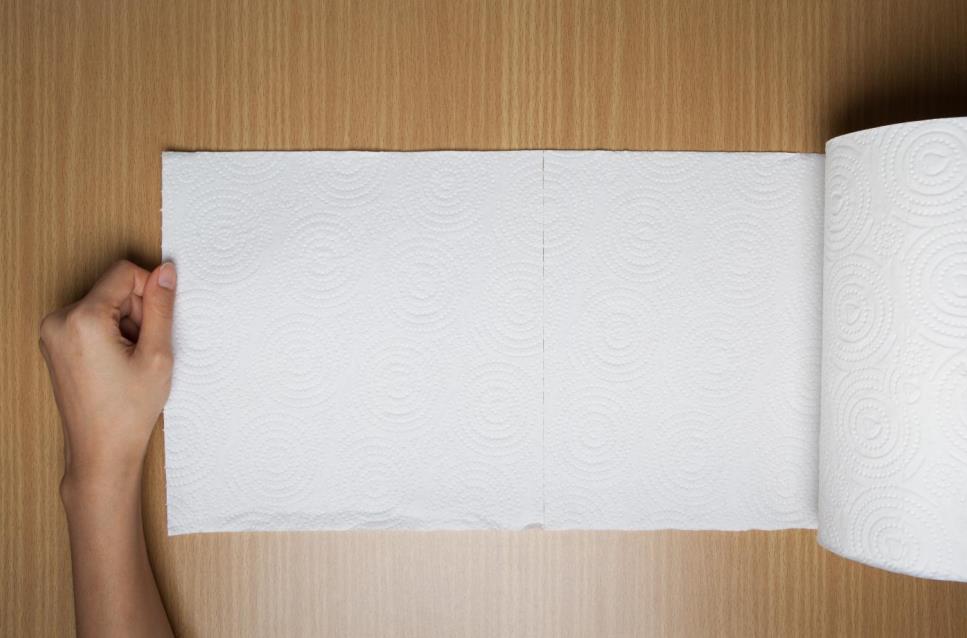
How it’s done
- Stand in a well – lit area and hold a piece of your chosen paper in front of you so that its longest edge is presented.
- Place the knife edge on the edge of the paper and using minimal force slice very slowly through the paper.
- The edge of the knife should bite into the paper and then glide straight through if the edge is sharp.
- If the edge of the knife skips or snags as it moves through the paper, you’ve identified a rough spot on the blade edge.
- The benefit of using fibrous paper is that you can actually hear audible snags as the knife blade cuts.
- Continue this test again all along the blade edge so that you’re testing the entire edge from heel to tip.
- Note areas of concern or snagging so that these imperfections can be worked out by sharpening and honing.
The fingernail test
It’s advised to use the thumb nail for this test as it offers the biggest surface area. Always perform a fingernail test by sliding the knife away from yourself, i.e. away from the cuticle towards the tip of the finger.
How it’s done
- Hold the knife securely in your dominant hand and place your chosen fingernail of the other hand on a flat, stable surface.
- Keeping the spine of the knife blade upright, so that the blade is standing vertically, place the knife edge on your fingernail without applying any pressure.
- Tilt the blade of the knife slightly and slide the blade down the nail very gently without exerting any pressure.
- If the edge of the blade catches on or digs into the nail bed at all, it is sharp enough for use.
- If the knife edge slides straight down the nail bed without stopping or snagging, the edge of the knife is dull and will need intervention.
The tomato test
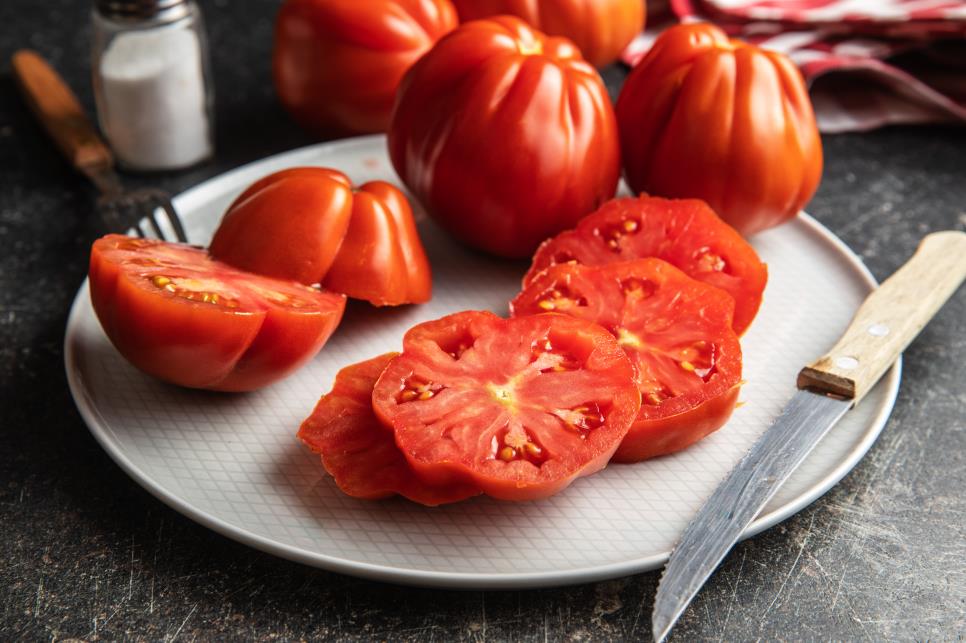
Another familiar household favorite, this test uses a common kitchen ingredient to assess blade sharpness.
How it’s done
- Take a large tomato and cut the apex of the base off so that its surface is flat, and you can place it securely flat side down on a stable surface.
- Without touching the tomato with your hands, rest the heel portion of the knife edge vertically on top of the tomato.
- Now, draw the knife back towards yourself slowly and without exerting any downward pressure on the knife blade itself.
- If sharp, the knife should pierce the skin and slice through the tomato cleanly and easily, giving you a uniform slice of tomato flesh.
- If the blade edge is dull, the edge will either not penetrate the tomato at all (it’ll just slide off) or it will struggle through the tomato and make a ragged, uneven cut that damages the fruit.
- This tomato test method can also be used to demonstrate extraordinary sharpness for example with a chef’s knife.
- If no tomato is available, the same tests can be done using a peeled onion with the polar ends removed.
The hard plastic test
This test also uses a handy household item made from hard plastic – either a Bic pen or something like a cheap plastic drinking cup placed on its side.
How it’s done
- Secure the plastic item on a stable surface with your non – knife hand so that it doesn’t roll around.
- Using your knife hand, rest the edge of the knife blade vertically on the item and exert a very gentle downwards pressure, at the same time sliding the blade at an angle away from you.
- If the knife blade bites into the plastic and catches in its glide away from you it is relatively sharp.
- If the knife edge just slides straight off the plastic surface without making any indent the blade edge is dull and will need refinishing.
The hair test
This test is usually done with the forearm hairs and requires extreme care.
How it’s done
- Position your non – dominant forearm straight out in front of you. So, if you’re right handed, you’ll be extending your left forearm.
- With the knife in your dominant hand, position the blade on its side with the edge of the blade facing towards your hand and away from your body.
- Glide the blade just above your skin surface, moving down from the elbow towards your hand and taking care not to touch your skin.
- If the knife edge is ‘razor sharp’ it will shave off hairs as it moves easily and cleanly.
- If the knife edge is dull the arm hairs will either fold under the blade or the blade will snag on these hairs as it moves, cutting them raggedly.
Bonus: the ISO sharpness test
ISO, or the International Organization for Standardization is a worldwide organization of national standards. Naturally, there is a document ISO 8442-5:2004 prepared for testing culinary knife sharpness.
The test used a set of apparatus to mimic the action of the knife making contact with food. While replacing food with consistent medium. The test will go through several cycles, each cycle the testing blade will cut in fixed angle and force. The final result of knife sharpness is determined by adding together the medium cut (in mm) during the first 3 cycles. By ISO, the adequate sharpness level will be 50mm.
The test also conduct an edge retention test. Which will be determined by the total medium cut during the test.
Preventing knives from getting dull
Regular sharpening routine
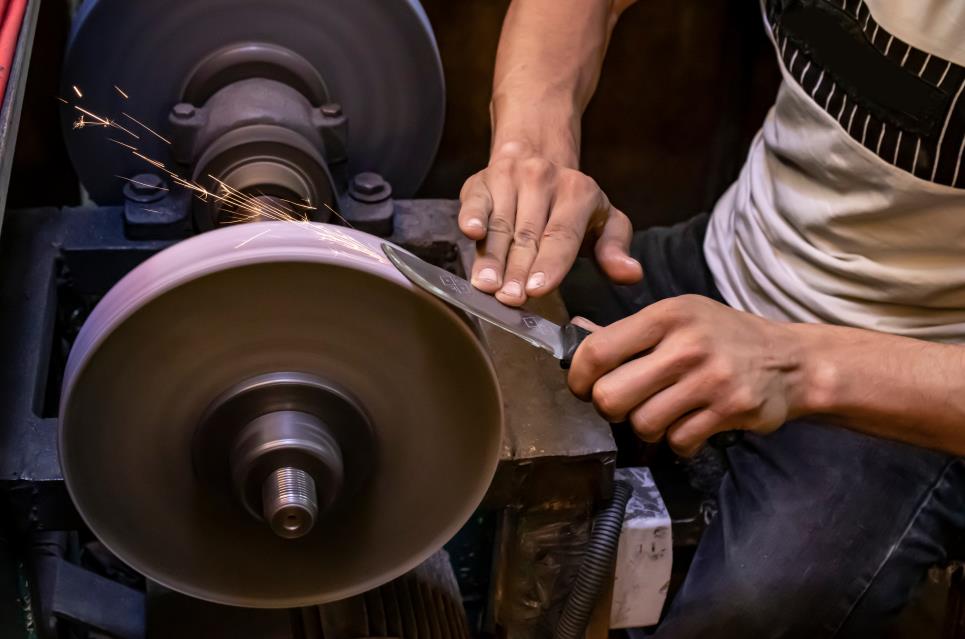
Every knife you sell will need to be sharpened and this can be done by the buyer themselves or by a professional sharpening service. As a well prepared retailer of knives it would be wise to have a contact list of reputable sharpening services that you can recommend to customers.
Whetstones, sharpeners and honing rods all play an intrinsic role in knife care and these products should be stocked by you to offer to customers as a matter of course on knife purchase.
Understanding how sharpness relates to daily use
It’s critically important to communicate with your buyer and understand what the knife is to be used for, and what level of sharpness is therefore required.
The requirements of a sushi chef shaving tissue thin slices of expensive salmon are going to be very different to those of a home cook who mainly cuts common kitchen ingredients like onions and garlic, and the expectations for sharpness are going to be completely different too.
Many everyday knife users will be completely happy with a knife sharpness level that a professional knife user would scoff at, so this difference in expectation must be considered so that the desires of each knife user are met on an individual basis.
General knife care tips to avoid blade edge dulling
- Different types of knife dependent on blade geometry, beveling and knife steel will require different sharpening techniques and care. Understand these differences in the product so that you can educate your customers effectively.
- Knives should be handwashed separately and stored appropriately, we recommend a knife sheath as a top option for protecting blade edges.
- Cutting surfaces that are gentle on blade edges are best – wood is recommended and substances like glass should be avoided!
- When scraping up ingredients, the spine of the knife should be used, never the blade edge.
- Knives must be washed promptly and dried thoroughly, particularly after contact with acidity. Acidic substances can cause corrosion to the micro scales of the knife edge which may be invisible to the naked eye but will still affect knife performance.
Buy Wholesale Knives and Start Scaling up with Us Today
Contact us and connect with a sales rep to get a free quote.
In conclusion
We trust that this overview of knife sharpness tests and knife care has given you a firm grounding in ensuring demonstrably sharp blades: both for yourself as a retailer and for your customers.
At LeeKnives we pride ourselves on offering a full spectrum of knife sales knowledge and avenues for revenue generation that include dropshipping; wholesale supply; and custom knife delivery.
Our quote portal is always available and ready to help with any queries you may have. It’s our pleasure and our business to help you succeed in the exciting world of knife sourcing and retail!
Until next time, we wish you prosperity and good health dear reader.
